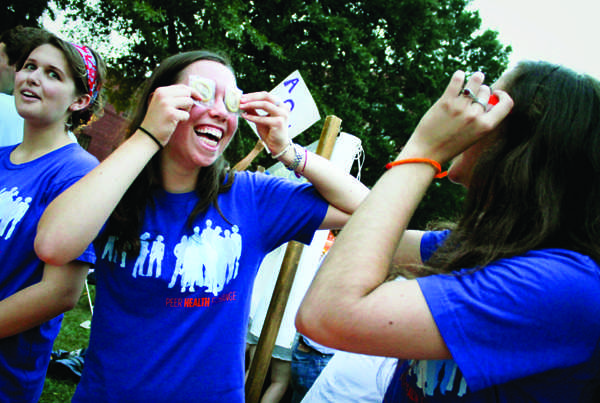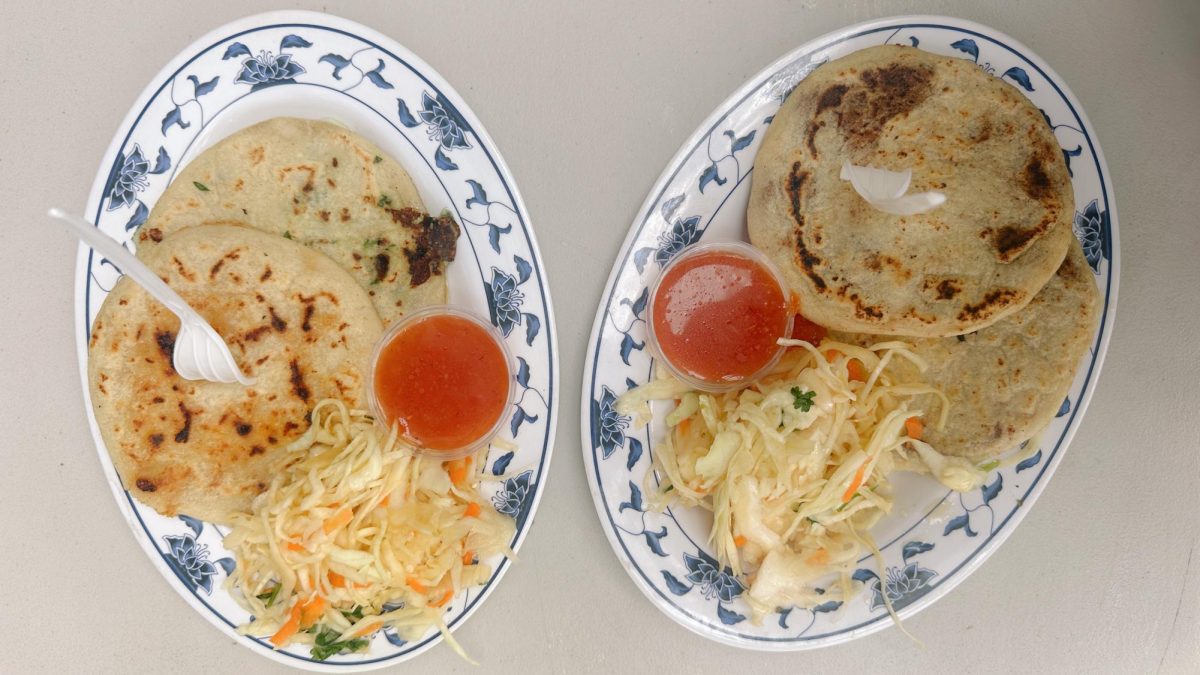For GW sophomore Zoë Grimaldi, getting high school students to speak up about sexual health is difficult enough. So when a shy teenage girl shocked her ninth-grade health class by stressing the importance of condoms, it was just the reaction Grimaldi was looking for.
The girl’s warning to her peers offered Grimaldi proof that her time teaching high schoolers about sexually transmitted infections had been worth it.
“The room was silent in awe of [the student’s] insight, and perhaps also due to the fact that the quietest girl in the class said the term ‘genital area’ in such an authoritative voice. I’ve never felt so proud,” Grimaldi recalled. “After class that same student came up to me and thanked me for teaching.”
Roughly 50 GW volunteers participate in Peer Health Exchange, which places college students in high school classrooms to teach health classes on topics including sexual decision-making, mental health and alcohol, drugs and tobacco.
The need for sex education in D.C. is high: the city has one of the highest rates of teen pregnancy in the country, as well as high rates of HIV and sexually transmitted infections.
“[Peer Health Exchange is] serving communities where young people are at high risk for a variety of socioeconomic factors,” said Cassandra Bell, a Spanish teacher and Peer Health Exchange liaison at Eastern Senior High School. “We have some pretty staggering numbers in terms of students who are exposed to drug and alcohol abuse, having to make decisions about their sexual lives at a very young age.”
The national program operates from six cities, including Boston and Los Angeles. The D.C. branch is partnered with both GW and Howard University, and sends volunteers to six high schools, including Eastern Senior High School near Capitol Hill.
Although most high schools already have health staff, teachers and courses, Bell believes students feel more comfortable when learning from people close in age.
“At Eastern, we have a great health clinic that’s fully staffed, but the biggest thing for our ninth grade population is that they’re hearing information from people who are young enough where the idea is, ‘These are a group of people who are only a few years away from where I am, who face decisions I face,'” Bell said.
When tackling sensitive subjects – the curriculum includes lessons on abusive relationships, rape and sexual assault – volunteers hope the peer-to-peer system encourages open discussions.
“The age difference is just right. The peer-to-peer model allows us the closeness in age to truly understand the problems and difficult decisions these teens face, while also gives us the few years of space to be wiser and take on that leadership role easily,” Grimaldi explained.
Statistics on the peer-to-peer model are encouraging, with 94 percent of students saying they would use information from the program when making future health decisions, according to Peer Health Exchange’s national headquarters.
“Students might be uncomfortable talking to an adult, a teacher or a parent about these topics, but speaking to someone closer in age can make them open up,” said junior Ayse Cetinkaya, a GW Peer Health Exchange co-coordinator.
D.C. public schools require 1.5 credits in health and physical education to graduate, but do not specify when a student must take a health class. As a result, students learn about critical decision-making long after they might be partaking in “risky behavior” like alcohol use or sex, said sophomore and co-coordinator Julia Keegan.
Both D.C. public schools and the Peer Health Exchange curriculum teach about multiple forms of contraception, and the program emphasizes a mission to inform, not to dictate or to judge student behavior.
“We all remember our senior year of high school,” Keegan said. “If students are taking health class as seniors, the likelihood that they’ve already engaged in what we identify as ‘risky behavior’ is high. If we can speak to them as ninth graders, we can better inform them.”
As the program enters its second year at GW, it’s looking to expand its volunteer base to serve more high-schoolers.
“Teens, even when they are pretending to zone out during the longer lecture sections, want to learn this information and they do remember it, as well as us, the health educators,” Grimaldi said. “I know we make an impact.”







